|
Displaying items by tag: museum of fine arts boston
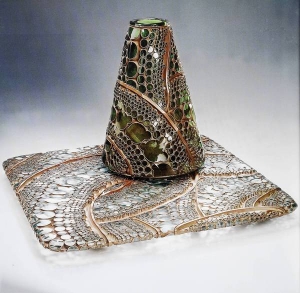
Thanks to a generous gift from longtime museum donors, Daniel Greenberg and Susan Steinhauser, the Los Angeles County Museum of Art added 37 new pieces, including vessel forms and sculpture, to their permanent glass collection. The acquisition includes works by notable glass artists such as Michael Glancy (b. 1950), Klaus Moje (b. 1936), Ann Warff Wolff (b. 1937), and Richard Marquis (b. 1945).
LACMA’s glass art collection, which focuses on studio glass from the mid-1960s to the late 1990s, contains more than 100 objects, most of which came from Greenberg and Steinhauser who started donating to the institution in 1984. The museum’s relationship with the couple is so strong that earlier this year Greenberg and Steinhauser invited LACMA officials to handpick works from their personal collection for the museum. Besides their substantial glass gift, Greenberg and Steinhauser made a monetary donation to LACMA to go towards educational programs about glass.
Greenberg and Steinhauser’s collection boasts 400 to 500 works and is considered among the top five studio glass collections in the United States. The couple began avidly collecting in the mid-1970s and slowed down around the mid-1990s when sculpture and nontraditional forms became more prominent than the vessel art they adored. The duo has since taken to collecting contemporary photography.
In celebration of the studio glass movement’s 50th anniversary, Greenberg and Steinhauser decided to disperse most of their collection to a number of institutions across the country. The couple will keep 15 to 20 sentimental pieces for themselves and the rest of their works will go to LACMA, the Museum of Fine Arts Houston, the Museum of Fine Arts Boston, the Minneapolis Institute of the Arts, and the Corning Museum of Glass. Greenberg also hopes to donate works to the Smithsonian, New York’s Museum of Arts and Design, the Mint Museum, the Contemporary Museum in Honolulu, and the Racine Art Museum, although arrangements with those institutions still need to be made.
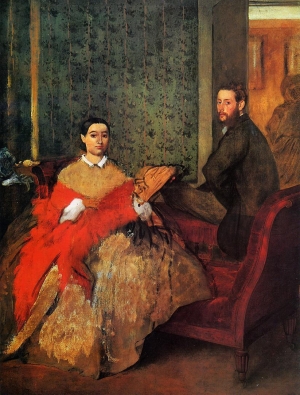
Patrons who are familiar with the permanent collection at Boston’s Museum of Fine Arts might become befuddled upon their next visit to the institution. Some of the museum’s finest works including Pierre-Auguste Renoir’s Dance at Bougival, the pivotal Claude Monet painting, La Japonaise: Camille Monet in a Japanese Costume, five works by Paul Cézanne, five more by Edouard Manet, and two of the masterpieces by Vincent Van Gogh are nowhere to be found.
While some of the works have been lent to museums in the United States, Japan, and Europe to enhance exhibitions, others have been rented to for-profit organizations. Loans between institutions are common practice, but compounded with the large number of works currently out on rent by the MFA, the museum’s own collection appears to be lacking. Currently, 26 of the MFA’s paintings are involved in exhibitions in Italy, which the institution received a hefty yet undisclosed fee for. Some of the works now on view in Italy are two paintings by John Singleton Copley and two Rembrandt portraits as well as single works by Eugène Delacroix, Paolo Veronese, Winslow Homer, John Singer Sargent, Paul Gauguin, Alberto Giacometti, and Pablo Picasso.
While the MFA is excited to be raising revenues, the act of charging fees for lending works has been a source of controversy. One of the main duties of public institutions, including art museums, is to share their collections with the public. Many objectors find the practice of lending works for profit to be in direct opposition to this goal.
Other major holdings that are not presently at the MFA are Diego Velázquez’s Luis de Gongora, two works by El Greco, two more by Gustave Courbet, the museum’s only painting by Edvard Munch, and arguably its greatest work by Edgar Degas, Edmondo and Therese Morbilli. While MFA officials argue that they are bolstering the museum’s international reputation, critics feel the institution is suffering for it.
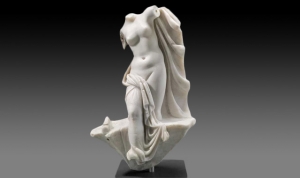
There was plenty of excitement when the San Antonio Museum of Art’s exhibition, Aphrodite and the Gods of Love, opened on September 15. Since then, the show has turned into a source of controversy. Organized by the Museum of Fine Arts, Boston, the exhibition features 125 statues, vases, terracotta and bronze figures, mirrors and jewelry from the MFA and seven works from the Museo Archeologico Nazionale in Naples, Italy. Aphrodite is the first exhibition to focus on the art of ancient Greece in the San Antonio Museum of Art’s history.
A 2,000-year-old statuette of Aphrodite, the goddess of love and beauty, has been used in promotional material to spread the word about the rare exhibit and has left some people in shock. The San Antonio Current, San Antonio Magazine, San Antonio Jewish Journal, and San Antonio Business Journal all ran the advertisement without question. Three other publications as well as the San Antonio International Airport refused to promote the exhibition as long as a nude Aphrodite was featured in the ad.
While the controversy has some people flustered, it has brought a good amount of attention to the San Antonio Museum and the exhibition. Aphrodite will be on view through February 17, 2013.
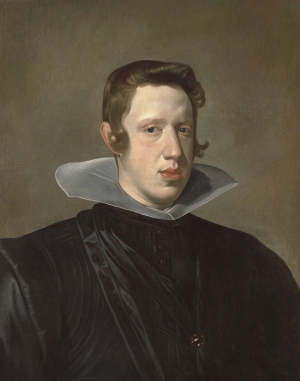
“Diego Velazquez: The Early Court Portraits” opened at Dallas’ Meadows Museum this past Sunday and in preparing for the exhibition, researchers may have uncovered the artist’s first portrait of his life-long subject, King Philip IV of Spain. Named the king’s court painting in 1623 at the age of 24, Velazquez upheld this position until his death in 1660, forming one of the most significant relationships in art history.
In order to make the Velazquez exhibition possible, the Meadows Museum teamed up with Spain’s national art museum, Museo del Prado. The show includes a portrait of the poet Gongora y Argote from the Museum of Fine Arts, Boston, a portrait of a court jester painted in the early 1630s that is on loan from the Cleveland Museum of Art, and a never-before-seen portrait of Philip IV from a private Spanish collection.
The Meadows Museum is proud to bring together two of Velazquez’s early portraits of the king for the first time in four centuries. One is the Prado’s full-length portrait painted in the 1620s of the king dressed entirely in black and the other is the Meadows’ own bust-length portrait. Before the show opened, both portraits underwent analysis at the Prado and X-rays revealed hesitant brush strokes on the Meadows portrait indicating that this was Velazquez’s first attempt at drawing the king.
“The Early Court Portraits” will be on view through January 13, 2013.
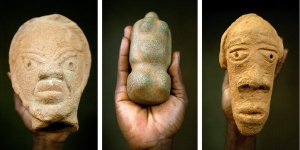
Djenne-Djenno, one of the best-known archaeological sites in sub-Saharan Africa, spreads over several acres of rutted fields near the present city of Djenne in central Mali. The ruts are partly caused by erosion, but they’re also scars from decades of digging, by archaeologists in search of history and looters looking for art to sell.
These days, with Mali in the throes of political chaos, it’s unlikely that anyone is doing much work at all at the site, though history and art are visible everywhere. Ancient pottery shards litter the ground. Here and there the mouths of large clay urns, of a kind once used for food storage or human burial, emerge from the earth’s surface, the vessels themselves still submerged.
The image of an abandoned battlefield comes to mind, but that’s only half-accurate. Physical assaults on Djenne-Djenno may be, at least temporarily, in abeyance. But ethical battles surrounding the ownership of, and right to control and dispose of, art from the past rage on in Africa, as in other parts of the world.
A few weeks ago the Museum of Fine Arts, Boston, announced the acquisition of an American private collection of 32 exquisite bronze and ivory sculptures produced in what is now Nigeria between the 13th and 16th centuries. Within days the Nigerian National Commission for Museums and Monuments claimed, via an Internet statement, that the objects had been pillaged by the British military in the late 19th century and should be given back.
More chilling were reports last month of cultural property being destroyed in Timbuktu, Mali, some 200 miles north of Djenne. Islamist groups, affiliated with Al Qaeda, have singled out Sufism, a moderate, mystical form of Islam widespread in Mali, for attack. In Timbuktu, with its Koranic schools and manuscript libraries, they have begun leveling the tombs of Sufi saints, objects of popular devotion.
In short, the wars over art as cultural property take many forms: material, political and ideological. On the surface the dynamics may seem clear cut, the good guys and bad guys easy to identify. In reality the conflicts are multifaceted, questions of innocence and guilt often — though not always — hard to nail down. In many accounts Africa is presented as the acted-upon party to the drama, the loser in the heritage fight, though such is not necessarily the case, and it certainly doesn’t have to be, and won’t be if we acknowledge Africa as the determining voice in every conversation.
|
|
|
|
|